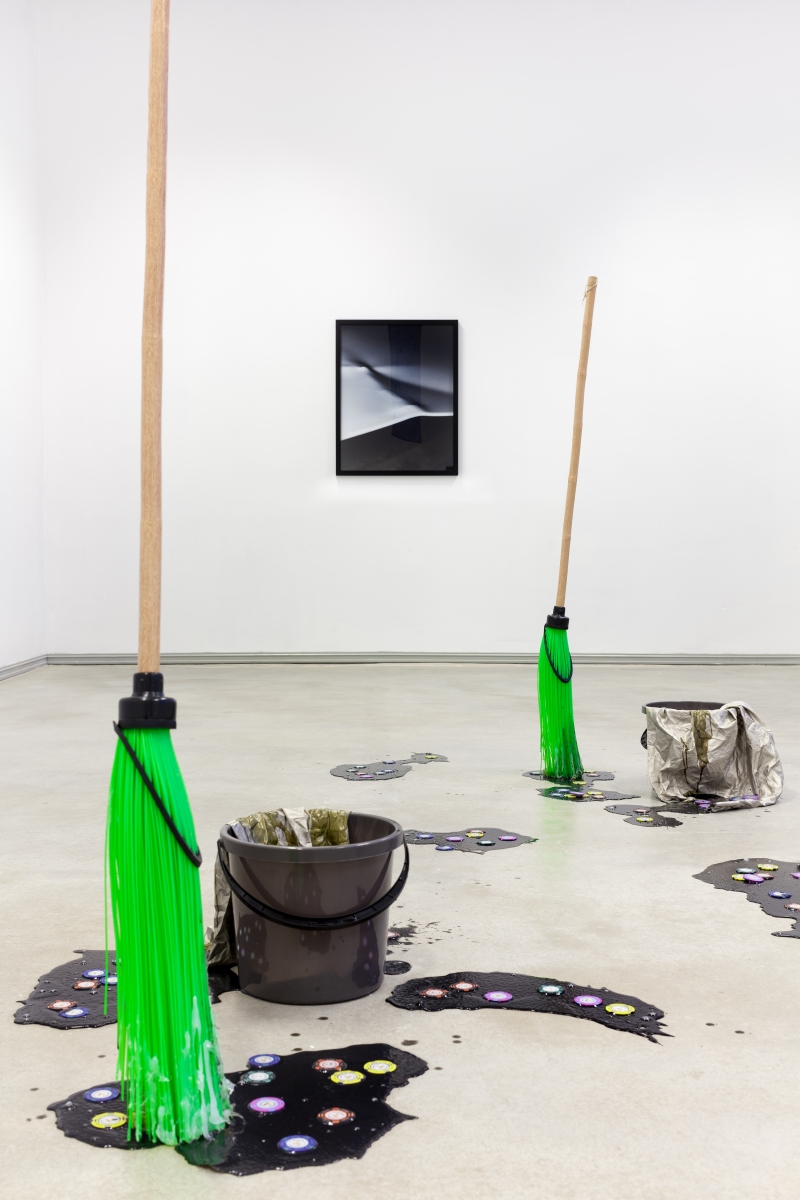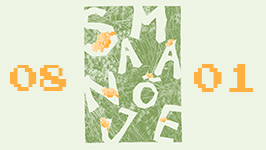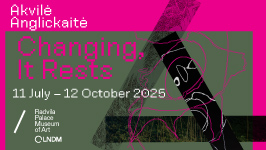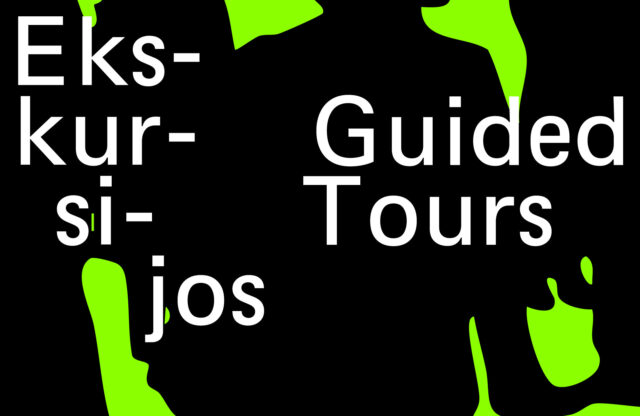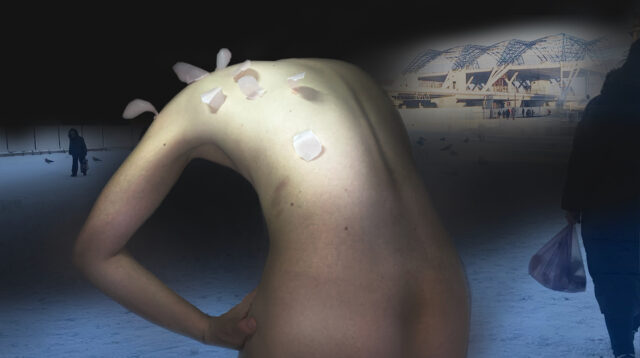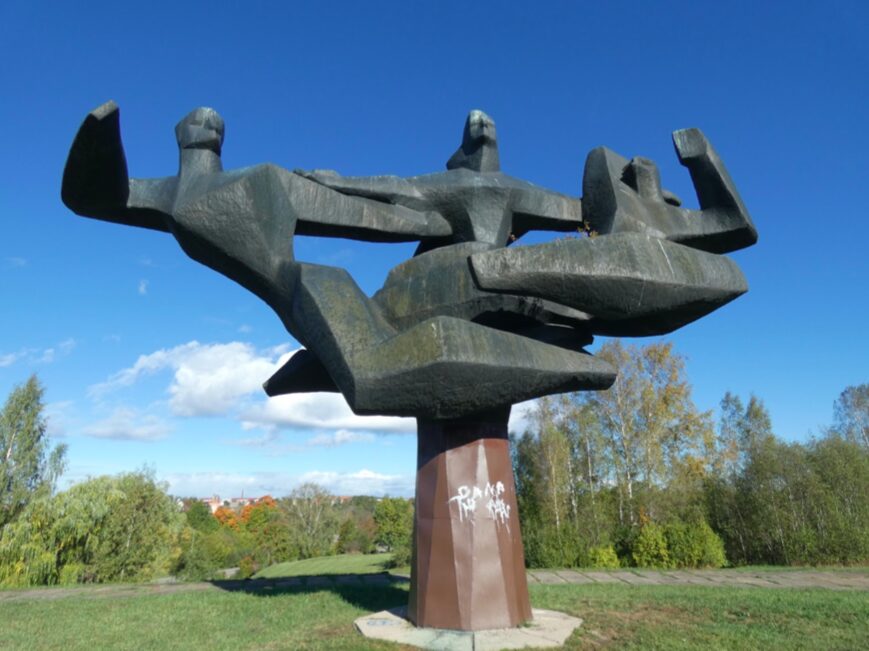“Our words and actions should not be like those of sleepers (for we act and speak in dreams as well)”
M. Aurelius, Meditations: Book 4, 161–180 AD.
“We remember that our first home is our body and that its inhabitants are our thoughts and our loves. We remember that life doesn’t have a price, and the places where it unfolds mustn’t have one either”
C. Fontaine, Human Strike and the Art of Creating Freedom: No Family Life, 2020.
The exhibition project “Dreams in Unfreedom” by Sven Parker and Roman-Sten Tõnissoo examines the notions of sleep and insomnia in modern society and the potential for striving towards the coordinates of a new reality, while exploring the paradoxes of slipping out of society. The concept of unfreedom, or a non-freedom in the style of Viktor Pelevin, covered in the exhibition denotes a seemingly paradoxical freedom, which is a multifaceted free existence constructed around the regime. Balancing the dichotomy of the overexposed presence and social blindness, the shouts and temptations of symbolic phantoms can be heard from both shores. What should we grasp in the ethereal realm, where our views of reality are based on ever-changing regulations, and our experiences are reflected back to us in constant representation?
Assuming that capitalism exists primarily in a form that maintains its presence through the appearance of the eternal present and it’s longing for ever-contemporary novelty, there is no past or future, only the present, as a state of unfreedom. As new forms of control are increasingly tied to circadian rhythms, the totalitarian consumerist system is advancing towards the frontier of dreams and sleep. Monitored cycles of sleep and insomnia, which can be observed as a sequence of biological indicators, are transferable to the new biological-social credit system. Synthetic insomnia and substances prolonging the eternal state of the present are paradoxically the means to prolong the universal sleep. Imagining an infinite party as a celebration of synthetic unfreedom, the desire to never truly fall asleep, but to fall asleep in a dream, artificially. This is a distortion of the coordinates of reality, brought in from the outside.
At one point, however, bodies reach the limits where somewhat malevolent and unsettling molecular biological processes arise, which are necessary for a state of re-tuning, in order to move beyond the stagnation of unfreedom. The party, which must not end, can only continue through various technologies, under the influence of which haunting sensations may infiltrate the spaces inhabited by the party. In the greenish glow of the early morning hours, the dreams of those present are gathered up, the dance floors overwhelmed with synthetic imagery are washed and mopped, and the light of the dawn is perhaps brought into the dark corridors of our memories.
Sven Parker’s (1985) visual-aesthetic practice is characterised by installations, staging and the use of different collage techniques. At the heart of his current creative activities is the concept of stage props along the lines of relational aesthetics. In 2011, he graduated from the Estonian Academy of Arts with a bachelor’s degree in painting and then continued his studies at the sculpture and installation department.
Roman-Sten Tõnissoo (1989) has graduated from the Estonian Academy of Arts in Contemporary Art (MA) and Photography (BA), and has also studied at FAMU, Film and TV School in Prague. His recent area of interest is the fragile connecting lines between aggression and the sense of security and the possibility for dialogue, as well as the quest for spirituality and a higher purpose and the potential these hold in contemporary society.
Madli Ehasalu (1988) is a curator and artworker with a background in semiotics and art history who is interested in activating works through site-specific, performative and educational technology techniques. She founded Gallery Mihhail and the 1st March Gallery, which deal with issues of the living environment and social welfare.
Dreams in Unfreedom
Sven Parker and Roman-Sten Tõnissoo
Curator: Madli Ehasalu
21.09.–20.02.2021
Tartu Art House monumental gallery, Vanemuise 26, Tartu.
The exhibition is supported by the Cultural Endowment of Estonia.
Photography: Roman-Sten Tõnissoo

Dreams in Unfreedom. Exhibition view. Photo by Roman-Sten Tõnissoo

Dreams in Unfreedom. Exhibition view. Photo by Roman-Sten Tõnissoo

Dreams in Unfreedom. Exhibition view. Photo by Roman-Sten Tõnissoo

Dreams in Unfreedom. Exhibition view. Photo by Roman-Sten Tõnissoo
Sven Parker. Witches of Faraday, 2022, installation, buckets, brooms, poker chips, faraday shielding fabric, paint pigments, silicone, latex, pigment, dimensions variable. Photo by Roman-Sten Tõnissoo
Sven Parker. Witches of Faraday, 2022, installation, buckets, brooms, poker chips, faraday shielding fabric, paint pigments, silicone, latex, pigment, dimensions variable. Photo by Roman-Sten Tõnissoo
Sven Parker. Witches of Faraday, 2022, installation, buckets, brooms, poker chips, faraday shielding fabric, paint pigments, silicone, latex, pigment, dimensions variable. Photo by Roman-Sten Tõnissoo
Sven Parker. Witches of Faraday, 2022, installation, buckets, brooms, poker chips, faraday shielding fabric, paint pigments, silicone, latex, pigment, dimensions variable. Photo by Roman-Sten Tõnissoo
Sven Parker. Witches of Faraday, 2022, installation, buckets, brooms, poker chips, faraday shielding fabric, paint pigments, silicone, latex, pigment, dimensions variable. Photo by Roman-Sten Tõnissoo

Roman-Sten Tõnissoo. Forever Green Is the Tree of Life, 2022, framed pigment print, 70 x 90 cm. Photo by Roman-Sten Tõnissoo

Roman-Sten Tõnissoo. Forever Green Is the Tree of Life, 2022, framed pigment print, 70 x 90 cm. Photo by Roman-Sten Tõnissoo

Sven Parker. Chi accetta è complice, 2022, acrylic on canvas, cargo net, 210 x 40 cm. Photo by Roman-Sten Tõnissoo

Sven Parker. Chi accetta è complice, 2022, acrylic on canvas, cargo net, 210 x 40 cm. Photo by Roman-Sten Tõnissoo

Roman-Sten Tõnissoo. The Moon Had Spread Over Everything a Thin Layer of Silver, 2022, framed pigment print, 70 x 90 cm. Photo by Roman-Sten Tõnissoo

Dreams in Unfreedom. Exhibition view. Photo by Roman-Sten Tõnissoo
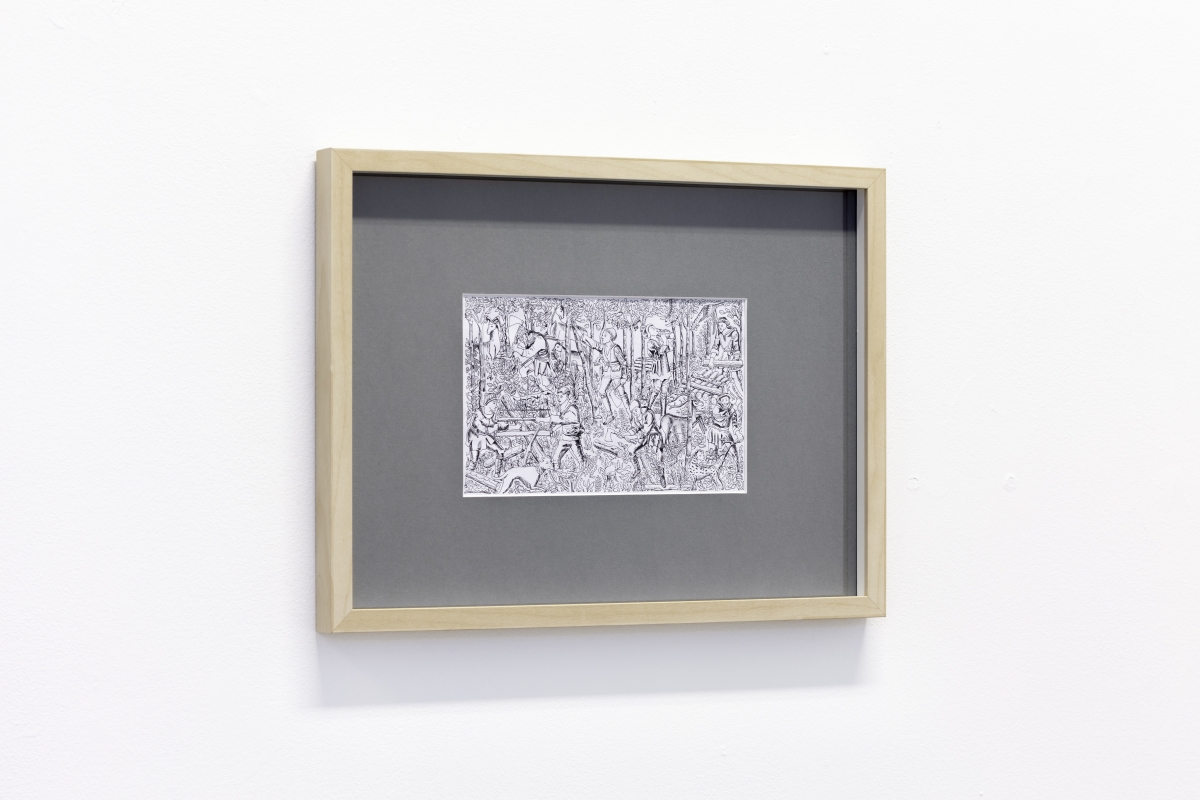
Sven Parker. Act of Disappearance, 2022, framed drawing, 30 x 40 cm. Photo by Roman-Sten Tõnissoo

Sven Parker. Witching Hour, 2022, drawing, acrylic on canvas, 33 x 41 cm. Photo by Roman-Sten Tõnissoo

Sven Parker. Witching Hour, 2022, drawing, acrylic on canvas, 33 x 41 cm. Photo by Roman-Sten Tõnissoo

Sven Parker. Witching Hour, 2022, drawing, acrylic on canvas, 33 x 41 cm. Photo by Roman-Sten Tõnissoo

Roman-Sten Tõnissoo. Surrender Your Dreamz, 2022, flag, flagpole, 300 x 165 x 105 cm. Photo by Roman-Sten Tõnissoo
